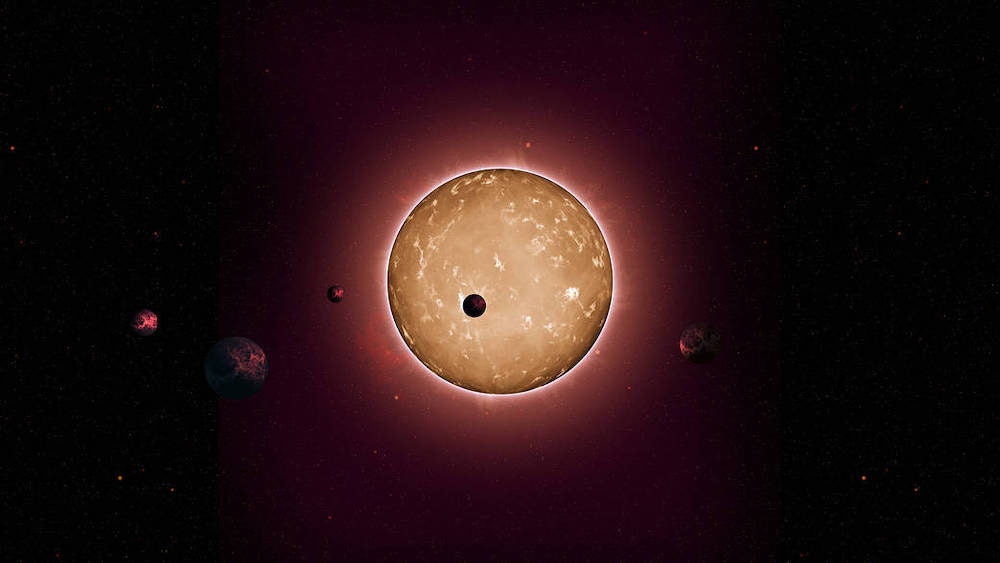Create a free profile to get unlimited access to exclusive videos, sweepstakes, and more!
366 more exoplanets we never knew existed have emerged from the dark
We know of less than five thousand exoplanets floating around, but that number has just gone up!

There are probably billions of planets beyond our solar system that we don’t even know exist. We know of less than five thousand, but that number just went up.
Strange orbs are floating everywhere. UCLA astronomers have now shed light on 366 new exoplanets with the help of a planet detection algorithm. Maybe the Kepler space telescope is dead, but when it was revived for the K2 mission, it gathered massive amounts of data that the AI has found unknown planets hiding in. The most bizarre observation had to be the two Saturn-size gas giants orbiting the same star unusually close to each other. Something like that almost never happens.
Developed by Jon Zink of UCLA, who led a study recently published in The Astronomical Journal, the planet-hunting AI went through 800 million images of stars in 500 terabytes of data. That would be enough to give any human a massive headache. With everything the software found, Zink and his team were able to catalog the objects that Kepler glimpsed before it took its last breaths, and that information will soon be added to NASA’s master archive of exoplanets.
“We developed a code that would look for telltale signs of a false signal, mimicking the visual inspection process,” Zink told SYFY WIRE. "This requires the signal to pass a series of thresholds before being assigned planet candidacy. It can go through a large sample of signals very quickly.”
It was the frustration he experienced from false planetary signals that led Zink to develop an AI that would be able to tell the real planets from the posers. Humans are usually right on when seeking out the telltale dips in star brightness that give away a transiting planet. So long as the brightness fades periodically and maintains a certain shape, it usually means a planet is passing right in front of it. The problem is that sometimes instruments can wonk out and create false signals. Other issues include objects besides planets temporarily blocking out starlight.
Observations from the AI could possibly tell us which stars are most likely to have planets forming around them, and what could indicate that planets are possibly being born around a star. Because the algorithm went off finding planets on its own, researchers can experiment with what it detected to look for any biases it could have (robots don’t have minds of their own, but you still never know what they can screw up). Zink wants to see how it reacts when the data is purposely adulterated with artificial signals, and if it spits out a positive, it needs upgrading.
Finding out how many planets are actually there will also give Zink and his research team ideas as to what might have formed or still be forming planets around suspected stars.
“If there appears to be a lack of large planets at short periods, we can infer that nature does not favor the formation of these types of planets, or that they are being destroyed or modified somehow over time,” he said. “That can help us see into physical formation mechanisms.”
So why are those gas giants that are orbiting so close together such an anomaly? Gas giants with short orbital periods are already rare enough, because they usually don’t venture close enough to their star for that. Think of how far away Jupiter, Saturn, Neptune, and Uranus are from the Sun. These massive planets are also typically loners because the gravity they exert on smaller planets or other bodies can knock those out of orbit, and can even mess with larger planets. Jupiter and Saturn are thought to have called the shots in the early solar system.
Never mind how much material from their star system’s protoplanetary disc those two gas giants would have needed to form. Maybe our solar system has four gas giants, but none of them orbit anywhere near as close together as these two. While they are still embryos in their disc of gas and dust, immense amounts of material in close proximity would have been needed to bring them to the size they are thought to be now. Zink thinks what could have happened is that they formed further away from each other and somehow migrated inwards.
“Sometimes we need to miss something to appreciate it,” he said. “By looking at planets around stars that are different from the Sun, we can see what features make our solar system so special (or not special at all) and the role our parent star plays in our formation history.”


























